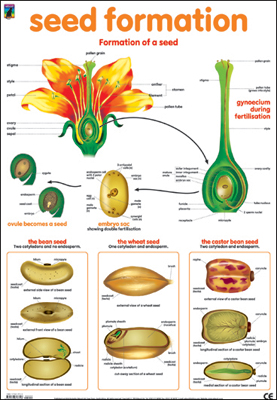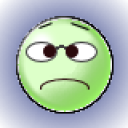1 Answer
Seed
A seed is a small embryonic plant enclosed in a covering called the seed coat, usually with some stored food.
It is the product of the ripened ovule of gymnosperm and angiosperm plants which occurs after fertilization and some growth with in the motherplant.
The formation of the seed completes the process of reproduction in plants (started with the development of flowers and pollination), with the embryo developed from the zygote and the seed coat from the integuments of the ovule.
This process starts with double fertilization in angiosperms and it involves the fusion of the egg and sperm nuclei into a zygote.
The second part of this process is the fusion of the polar nuclei with a second sperm cell nucleus, thus forming a primary endosperm.
Right after fertilization the zygote is mostly inactive but the primary endosperm divides rapidly to form the endosperm tissue.
This tissue becomes the food that the young plant will consume until the roots have developed after germination, or it develops into a hard seed coat.
The seed, which is an embryo with two points of growth (one of which forms the stems the other the roots) is enclosed in a seed coat with some food reserves.
In gymnosperms the two sperm cells transferred from the pollen do not develop seed by double fertilization but instead only one sperm fertilizes the egg while the other is not used.
The seed is composed of the embryo (the result of fertilization) and tissue from the mother plant, which also form a cone around the seed in coniferous plants like Pine and Spruce.
The new seed is formed in plant structures called fruits.
Plants have evolved many ways to disperse and spread the population through their seeds.
http://www.sciencedaily.com/articles/s/seed.htm

| 12 years ago. Rating: 4 | |
Oh! and.... that Angel with the bees or wasps, jumping and vehicles ... I have met him as well. I think that one is actually Michael.

 peacockglam00
peacockglam00
 lindilou
lindilou




